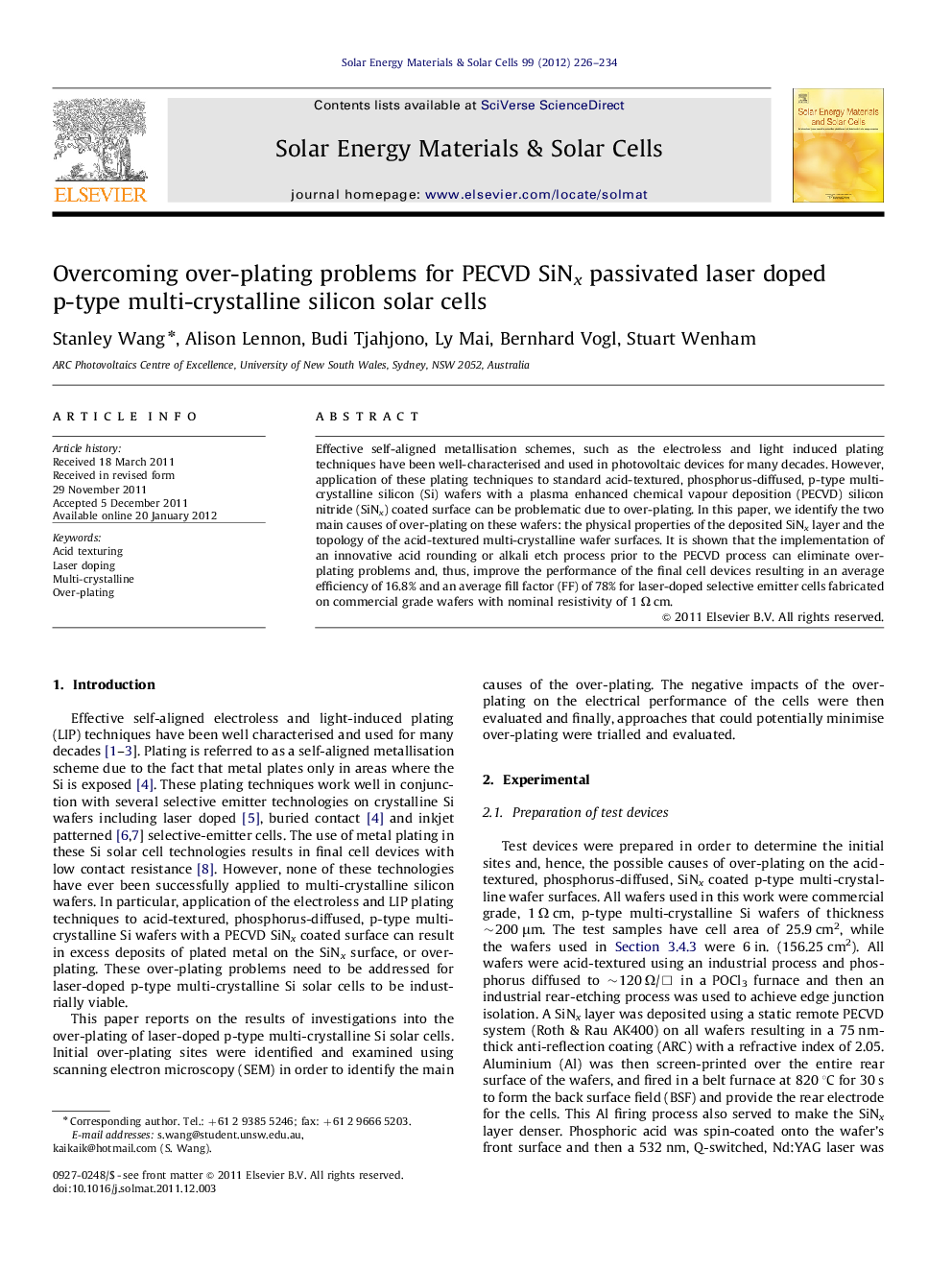| Article ID | Journal | Published Year | Pages | File Type |
|---|---|---|---|---|
| 79022 | Solar Energy Materials and Solar Cells | 2012 | 9 Pages |
Effective self-aligned metallisation schemes, such as the electroless and light induced plating techniques have been well-characterised and used in photovoltaic devices for many decades. However, application of these plating techniques to standard acid-textured, phosphorus-diffused, p-type multi-crystalline silicon (Si) wafers with a plasma enhanced chemical vapour deposition (PECVD) silicon nitride (SiNx) coated surface can be problematic due to over-plating. In this paper, we identify the two main causes of over-plating on these wafers: the physical properties of the deposited SiNx layer and the topology of the acid-textured multi-crystalline wafer surfaces. It is shown that the implementation of an innovative acid rounding or alkali etch process prior to the PECVD process can eliminate over-plating problems and, thus, improve the performance of the final cell devices resulting in an average efficiency of 16.8% and an average fill factor (FF) of 78% for laser-doped selective emitter cells fabricated on commercial grade wafers with nominal resistivity of 1 Ω cm.
► Self-aligned plating processes can be problematic due to over-plating problems. ► Physical properties of the deposited silicon nitride layer can cause over-plating. ► Topology of the textured multi-crystalline wafer surfaces can cause over-plating. ► Innovative acid or alkali etching processes can eliminate over-plating problems.
